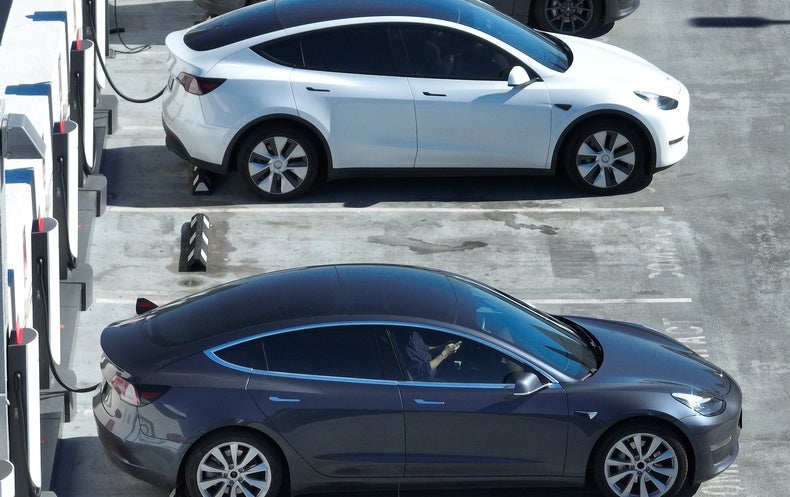The US Environmental Protection Agency (EPA) today proposed a landmark set of pollution regulations that could spark an electric-vehicle revolution and drive down greenhouse-gas emissions.
Under the rules, electric vehicles could account for an estimated 67% of new US passenger-car sales by 2032 and additional gains for larger vehicles — a major feat for a country where transportation is the largest source of greenhouse-gas emissions.
“These actions will accelerate the ongoing transition to a clean-vehicle future, tackle the climate crisis and improve our air quality for communities across the country,” EPA administrator Michael Regan said during a press conference.
The rules, which are currently in draft form pending public comments, apply to automobiles sold between 2027 and 2032. They would reduce average emissions from new passenger vehicles by more than half compared to the existing standard. But will the proposal succeed and how would it impact climate change?
Can the United States make enough electric vehicles in time?
The country has one of the largest vehicle fleets in the world, so one question is whether it’s possible to scale up to so many more electric vehicles in just a few years. Challenges include the need to roll out charging infrastructure, ramp up manufacturing capacity for electric cars and convince people to change their habits.
However, the rules are arriving in an economy that is already primed for innovation and change, says Margo Oge, who led the development of similar vehicle regulations as head of the EPA’s Office of Transportation and Air Quality under former president Barack Obama.
In particular, an infrastructure bill enacted by Congress in 2021 and a massive spending bill known as the Inflation Reduction Act, passed in 2022, are funnelling federal money into charging infrastructure and tax credits for consumers and for manufacturers of automobiles or batteries that upgrade or build new facilities.
Even without the EPA’s rules, electric vehicles could account for more than 50% of new US vehicle sales by 2030, according to a January study by the International Council on Clean Transportation, a non-profit research group in Washington DC, and the consultancy Energy Innovation Policy and Technology in San Francisco, California. The EPA rules would help to eliminate lingering uncertainties about how federal incentives will play out under the Inflation Reduction Act, says Robbie Orvis, a senior director at Energy Innovation: “It cements current trends into place, and creates a much stronger investment climate.”
What about securing raw materials?
Lithium and cobalt are needed to manufacture modern batteries, and the Biden administration is encouraging companies to purchase these and other materials through countries that have free trade agreements with the US. The administration is also encouraging domestic manufacturing in order to secure supply chains and dial back dependence on China. Some tax credits are available only if the manufacturing of batteries and vehicles take place in the United States, or if key minerals are sourced from free-trade partners such as Chile, Australia, Canada or Mexico. But so far, there are no obvious showstoppers when it comes to supplies of crucial minerals for electric-car batteries, according to the energy consultancy BloombergNEF.
“The investments are there, and these nations can theoretically provide sufficient supplies,” says Evelina Stoikou, an energy-storage analyst at BloombergNEF in New York City. But she warns that demand from Europe and other regions will rise, so it will be important for the United States to strengthen its international partnerships.
What impact would the rules have on climate change?
The EPA’s initial estimate is that the regulations would reduce carbon emissions by around ten billion tonnes over the next three decades. That is more than double the United States’ emissions last year, or more than one-quarter of the global total. “The administration is going to make history if indeed, at the end of the day, they finalized these new standards,” says Oge. “I’m really hopeful.”
Could the courts challenge the rules?
US courts have overturned environmental rules in the past — and the proposed rules are likely to face challenges. But one thing in their favour is that they follow procedures that the EPA has long used to control pollutants from vehicles and other sources. Rather than dictating technological change, the agency is setting pollution limits for car manufacturers. Those limits can be met with existing technologies, and it’s up to the automobile industry to decide how to comply, says Chester France, a former EPA official who is now a consultant for the Environmental Defense Fund, an advocacy group based in New York City. “I would fully expect those standards to be legally durable.”
This article is reproduced with permission and was first published on April 12, 2023.

